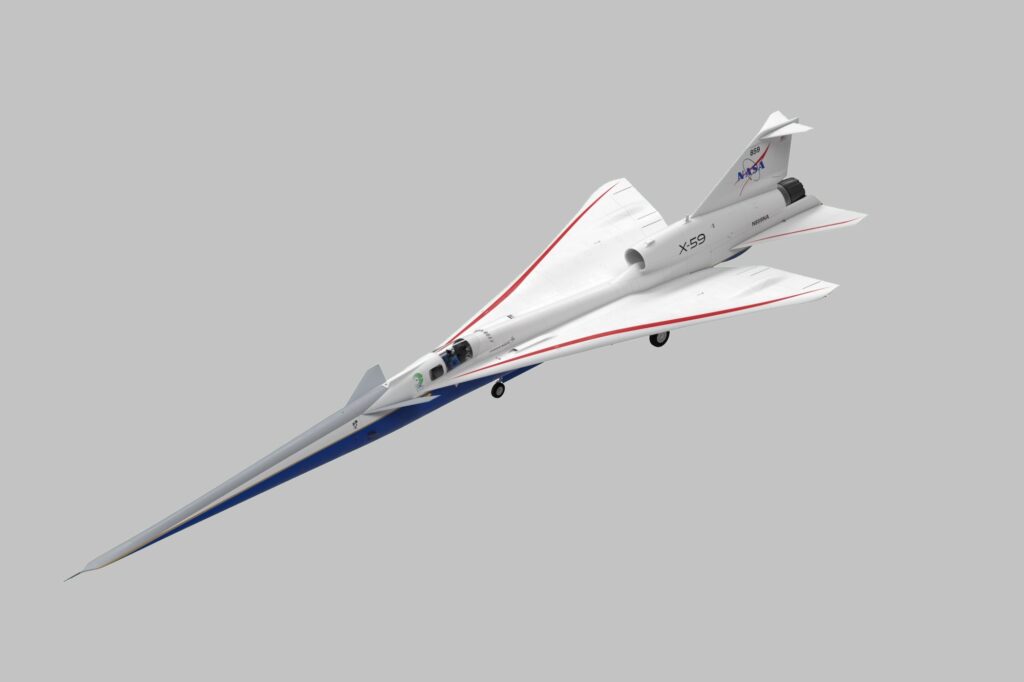NASA’s X-59 quiet supersonic aircraft made its way to the paint barn at Lockheed Martin Skunk Works’ facility in Palmdale, California.
The move, which occurred on November 14, 2023, marks an important milestone ahead of the first test flights of this experimental aircraft.
The X-59’s new paint scheme will feature a predominantly white body with a distinctive NASA “sonic blue” underside and red accents adorning its wings.
As explained by NASA in a press release, the paint’s purpose goes beyond mere aesthetics. It serves a critical role in preserving the aircraft from moisture and corrosion while also incorporating essential safety markings to enhance ground and flight operations.
“The year ahead will be a big one for the X-59, and it will be thrilling for the outside of the aircraft to finally match the spectacular mission ahead,” Catherine Bahm, Project Manager for the Low Boom Flight Demonstrator (LBFD) project, commented.
Once the paint job is completed, the project team will take final measurements of the X-59’s weight and exact shape. These measurements will contribute to refining computer models, ensuring precision and efficiency in the aircraft’s future operations.
The X-59 is an experimental aircraft designed and assembled by Lockheed Martin as part of NASA’s Quiet SuperSonic Technology (QueSST) program. Its goal is to fly at supersonic speeds while producing a sonic thump, or boom, quiet enough to meet the standards necessary for overland flight.
Conventional supersonic travel produces a sonic boom that can be disruptive to people on the ground. Presently, US regulations prohibit flights over land at speeds exceeding Mach 1 (1,234 kilometers per hour or 767 miles per hour) without specific authorization from the Federal Aviation Administration. The noise issue posed a significant challenge for the Concorde, limiting its supersonic operations to transatlantic flights and preventing it from traversing US and European airspaces.
The maiden flight of the X-59 is slated for 2024. It will then undertake a series of flights across different communities, gathering essential data on how humans respond to the sonic disturbances generated during supersonic travel.

